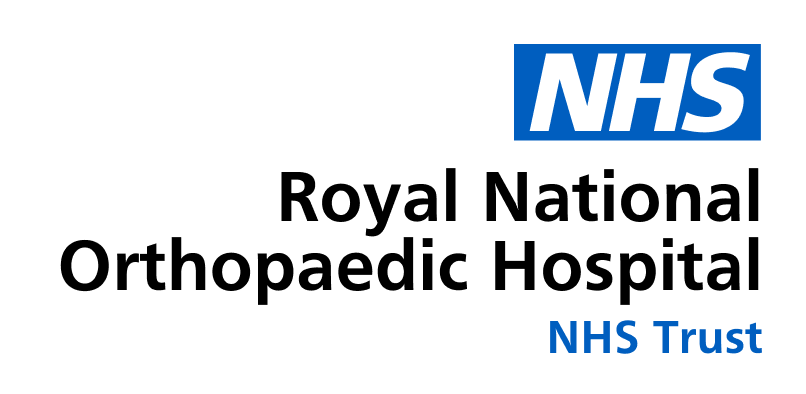Rethinking rostering: How The Royal National Orthopaedic Hospital is increasing efficiencies with Patchwork Rota

What did we need to do?
The Royal National Orthopaedic Hospital (RNOH) was already using Patchwork to manage temporary staffing for medics and is achieving great results via their staff bank. However, the trust faced common challenges when it came to rostering their substantive clinicians. Due to staffing pressures, rota gaps were a common occurrence, meaning extra resources were required to send shifts to temporary workers, often leading to higher costs. To address this, we introduced them to Patchwork Rota, which has gone live across the trust’s Trauma and Orthopaedics divisions.
The mission was simple – we needed to reduce the time RNOH spent on building their rosters and integrate their temporary staffing seamlessly with their rota management. We collaborated closely with the RNOH team to identify and optimise their processes and to ensure a smooth implementation. With an effective rostering system in place, rota coordinators would be able to maintain better visibility of staffing activities and avoid unforeseen temporary staffing usage and associated costs.
5 hours vs. 30 minutes
“Being able to create recurring rota patterns has reduced administrative workload.”
We spoke to rostering teams at the trust who shared the above sentiment – time and productivity are crucial to those working at RNOH, and spending hours manually creating individual rosters was hugely frustrating. Patchwork Rota was brought in to deliver time savings, such as:
- Drag-and-drop rota pattern builder: simplifies the creation of recurring rota patterns.
- Automatic cascading of shifts: ensures seamless integration from roster to bank.
- Intuitive landing page: consolidates updates, notifications, leave requests, and sickness records.
As one coordinator noted, “The new system has helped us automate leave requests and supported better staffing levels.” The improved automation and ease of use have resulted in a significant reduction in time spent building rosters, from 5 hours down to just 30 minutes. RNOH staff now have that time back to focus on clinician wellbeing or longer-term strategic planning, rather than reacting to demand at the last minute.
Embedding greater visibility
As mentioned above, lack of workforce visibility was a key issue that RNOH wanted to overcome, with a member of the rota team outlining that “previously, compliance was ‘unknown’. For example, we had no visibility.” This, coupled with the difficulties that came with filling vacant shifts, took over 6 hours each month. Once the Patchwork system was implemented, the team saw a reduction in the time it took to find cover, now spending just 1 hour per month.
With the Activity View feature, managers can now click on any unfilled shift, launch the shift modal, and add a worker from a dropdown list of available staff within the department. If the roster is live, the in-built compliance service checks for any scheduling or contract conflicts. Changes are instantly reflected to ensure real-time updates – maximising control and visibility for both clinical and non-clinical staff. As one staff member highlighted, “now we KNOW when shifts are not compliant.”
Trust feedback
The implementation of Patchwork Rota at RNOH has transformed their rostering processes, bringing about time savings and improved operational efficiency. As one staff member highlighted, “being able to create recurring rota patterns has reduced administrative workload,” reflecting the profound impact on daily operations. The visibility and control provided by features like Activity View ensure that compliance is no longer “unknown,” but is instead now fully transparent, enabling swift action when shifts need to be filled. This efficiency has been enhanced by the integration between the trust’s rostering and temporary staffing systems.
Feedback from the team underscores the success of this partnership. One user noted, “I like Patchwork and prefer it to the old system.” Another shared the view that “users are happier as the system gives them all the information they need,” emphasising the value of Patchwork Rota in providing a robust, reliable solution for managing both the trust’s rostering and temporary staffing needs across Trauma and Orthopaedics. By drastically reducing the time spent on creating and managing rosters, Patchwork Rota has empowered RNOH staff to become more productive, allowing them to focus on higher value tasks, rather than spending hours manually sourcing available workers to fill shifts at the last minute.
Additional temporary staffing success
Not only has RNOH boosted productivity by implementing Patchwork Rota, but the trust’s use of Patchwork Bank trust-wide has achieved some great results since launch, including:
- Average 1 day onboarding time
- Over 300 workers joined since launch
- £330k cost savings through reduced agency reliance
Importantly, Patchwork Rota and Bank integrate seamlessly, meaning the trust’s use of the two systems will support further time and cost savings in the long term, while improving the user experience for both staffing teams and clinicians.
“RNOH have had a great experience implementing ‘Patchwork Rota’. The Patchwork team took time to fully understand our needs to help us design a rota that was easy to use and fit for purpose. They shared good guidance and resources from previous implementations which led to a smooth roll out and were on hand to help us during the early days whilst we were getting up to speed. Feedback from doctors and service managers has been very positive and we are very pleased with the result.” – Emma Stewart (MCSP, SRP), General Manager – Medical Directorate
